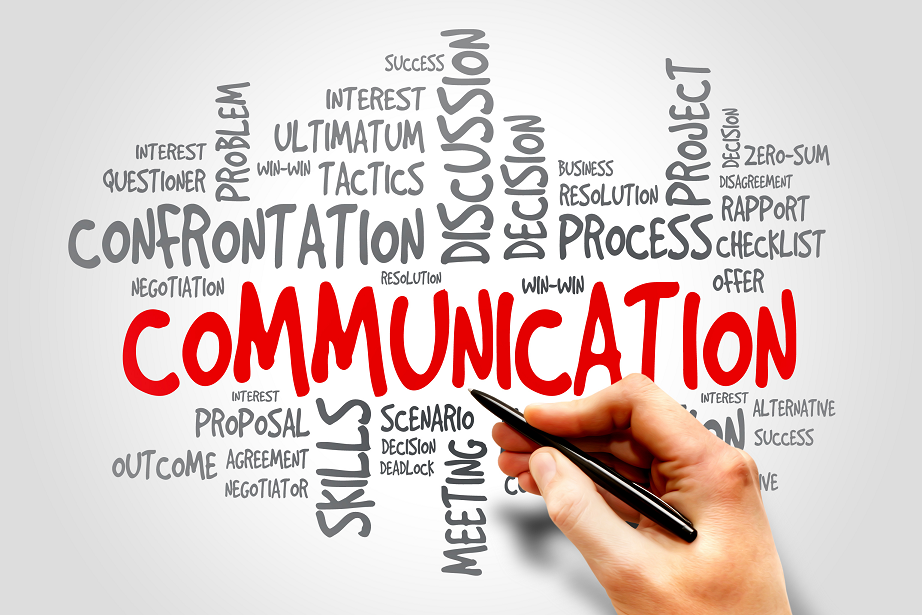COMMUNICATION: DEFINITION, IMPORTANCE AND GOALS
1. Definition of Communication
Communication is the process of exchanging information, ideas and emotions between individuals or groups using verbal, non-verbal or written methods (McCornack, 2019). It is a dynamic and interactive process that enables individuals to share meaning, establish relationships and achieve common insight.
Types of Communication
Communication can be classified into various forms, including:
- Verbal Communication: This includes the use of spoken or written words to transmit messages (e.g., face-to-face conversations, emails, phone calls).
- Non-Verbal Communication: This involves the transmission of messages without words, including body language, gestures, facial expressions and tone of voice (Mehrabian, 2017).
- Visual Communication: The use of images, symbols, charts and graphs to convey messages effectively (e.g., infographics, PowerPoint presentations).
- Digital Communication: The exchange of messages via electronic platforms, such as social media, video conferencing and instant messaging.
Practical Example
In a corporate meeting, a manager employs verbal communication to explain a new project, visual communication by presenting graphs and charts and non-verbal communication through eye contact and gestures to emphasise key points.
2. Importance of Communication
Effective communication plays a critical role in different aspects of life, including personal relationships, professional environments and societal interactions.
Enhancing Relationships and Social Interaction: Communication builds strong relationships by allowing individuals to express their emotions, opinions and needs clearly (Burleson, 2020). Active listening and empathy in responses aid mutual understanding and trust. For example, a couple having disagreements can resolve conflicts by openly discussing their concerns and actively listening to each other’s viewpoints.
Professional and Workplace Success: In the workplace, effective communication enhances teamwork, leadership and output. Clear instructions, active feedback and transparent deliberations help personnel stay aligned with organisational aims (Robbins & Judge, 2019).For instance, a project team that frequently holds meetings and collaborates ensures that tasks are assigned clearly, and targets are met efficiently.
Education and Learning: Communication is indispensable in educational settings, accelerating knowledge transfer between educators and learners. Interactive discussions, questioning and presentations enrich learning experiences (Vygotsky, 1978). For instance, a professor encourages students to ask questions and contribute to discussions, resulting in a deeper understanding of the subject matter.
Conflict Resolution and Negotiation: Effective communication helps in the resolution of conflicts and negotiate agreements by promoting dialogue, compromise and understanding (Gelfand et al., 2018).For example, during a labour dispute, union representatives and company executives engage in negotiations to find a fair resolution, using effective communication strategies.
Influence and Persuasion: Communication is a formidable tool for persuasion, shaping public opinion, influencing decision-making as well as driving behavioural change (Cialdini, 2021).For instance, a politician delivers a convincing speech to gain public support for a new policy initiative.
3. Goals of Communication
The goals of communication differ depending on the context and purpose of the interaction. The major goals include:
Information Exchange: The basic goal of communication is to share knowledge, facts and data effectively. This ensures clarity and decreases misunderstandings. For example, a newscaster delivers a report on global events to inform the public.
Building Relationships: Communication builds connections, trust and emotional bonds between individuals, enhancing social and professional interactions.An example is a team leader who consistently checks in with employees to show support and reinforce workplace relationships.
Persuasion and Influence: Communication is used to persuade or motivate others to take certain actions or adopt certain beliefs.A marketing campaign uses persuasive language and visuals to encourage consumers to buy a product.
Emotional Expression: Communication helps individuals to convey their emotions, thoughts and feelings to others, helping to maintain psychological well-being.For instance,a colleague consoles another by extending words of encouragement during a difficult time.
Problem-Solving and Decision-Making: Effective communication is fundamental in discussing issues, generating solutions and making informed decisions.An organisation’s management team discusses financial reports to make strategic business decisions.
Education and Learning: Educators in general, use communication to transmit knowledge, inspire novelty and promote learning.An example is a science teacher who uses storytelling and real-world examples to explain complex concepts in physics.
Conclusion
Communication is a fundamental aspect of human interaction that influences personal, professional, and societal outcomes. Understanding its definition, importance, and goals enables individuals to use communication effectively in different contexts. Whether in relationships, business, education, or negotiation, mastering communication skills enhances understanding, collaboration, and success.
References
- Burleson, B. R. (2020). The experience and effects of emotional support: What the study of culture and social structure can tell us. Journal of Social and Personal Relationships, 37(6), 1725-1744. https://doi.org/10.1177/0265407520917359
- Cialdini, R. B. (2021). Influence: The psychology of persuasion. Harper Business.
- Gelfand, M. J., Leslie, L. M., Keller, K. M., & de Dreu, C. K. (2018). Conflict cultures in organizations: How leaders shape conflict cultures and their organizational-level consequences. Journal of Applied Psychology, 103(5), 548–565. https://doi.org/10.1037/apl0000291
- McCornack, S. (2019). Reflect & relate: An introduction to interpersonal communication. Bedford/St. Martin’s.
- Mehrabian, A. (2017). Nonverbal communication. Routledge.
- Robbins, S. P., & Judge, T. A. (2019). Organizational behavior (18th ed.). Pearson.
- Vygotsky, L. S. (1978). Mind in society: The development of higher psychological processes. Harvard University Press.



